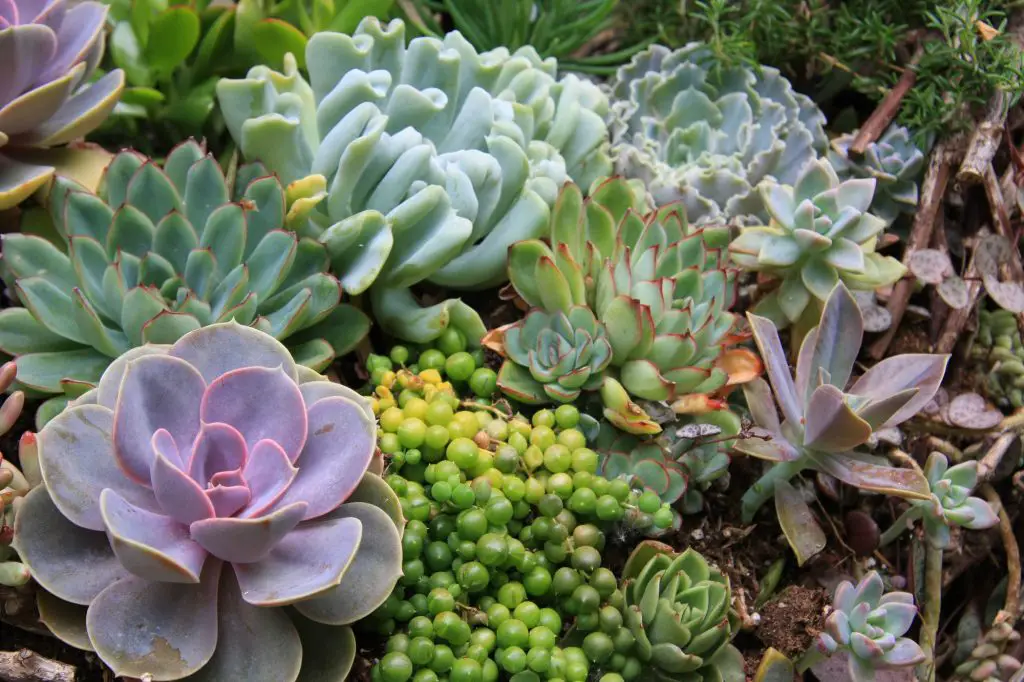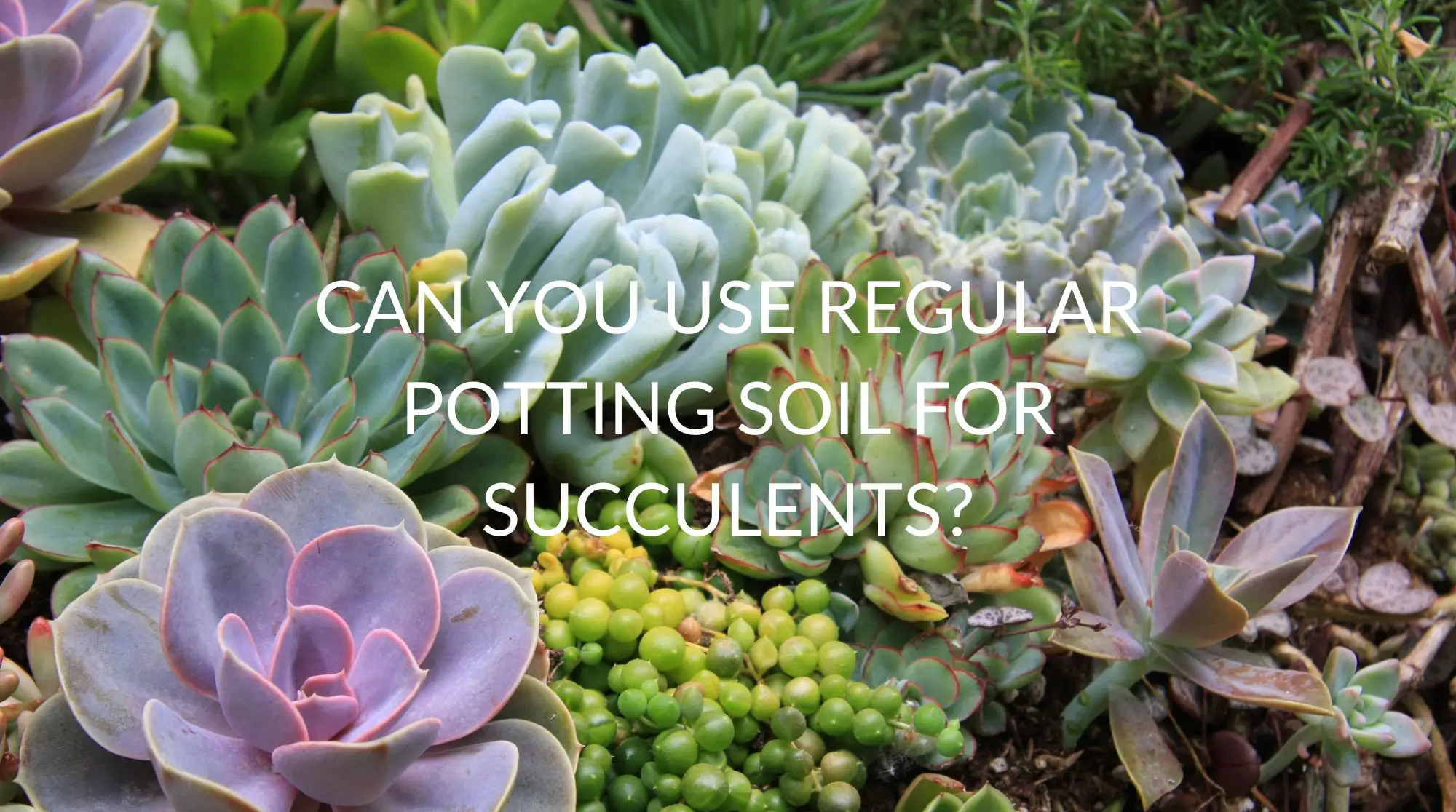Succulents have been all the rage among plant enthusiasts recently—they are used as decorative desk accessories in cute little pots or to add a little greenery to your porch or front yard. However, succulents can initially be hard to look after because their care and soil requirements are different from other household plants.
Let’s talk about how to choose the best soil for succulents in pots and how it is different from regular potting soil mix. Read on to find out whether you can use regular potting soil for succulents or not!
What Kind Of Soil Do Succulents Need?
Succulents are different from regular plants; therefore, they need a special type of soil to grow well. Being native to the desert, they have adapted to survive in harsh weather conditions with little water, and their care needs to be adjusted accordingly.
You might be surprised to find out that succulents die easily, not due to negligence but because most people are hypervigilant and over-water them. The trick is to make sure not to give them too much water and plant them in a soil mix that is loose and airy for proper water drainage.
If the potting soil used for potted succulents retains water and doesn’t provide the required amount of drainage, it will cause the roots to rot and go black. This is because succulents have adapted to living in dry desert conditions and surviving on a small amount of water and little nutrients.
So, it is important to have light and airy soil, which comes by adding a higher amount of coarse sand, perlite, and pumice than usual to your soil mix.

What Is The Difference Between Potting Soil And Succulent Soil?
The main difference between potting soil and succulent soil is the amount and type of ingredients used in both, but there are other factors to consider as well. We’ve broken these down for you:
- Moisture
It is extremely important for succulent soil to have low moisture retention as too much water can cause root rot. For succulents to thrive, the soil must mimic the water scarcity found in the desert, which is their natural environment. This is one of the key differences between potting soil and succulent soil, as regular potting soil mixes usually have a high amount of organic material that increases water retention.
- Drainage
For the right maintenance of cacti and other succulents, it is crucial to use a soil mixture with higher drainage than regular potting soil. Simply put, drainage is the property of soil to let water flow through without becoming stagnant. Proper drainage is essential because cactus roots are delicate in nature and get damaged easily by water retention, causing root rot.
- Aeration
The concept of aeration is a lot similar to drainage. The main takeaway is that succulent soil should be light and loose to allow air to circulate and provide space for the small cactus roots to grow. Good aeration is achieved by increasing the amount of lightweight inorganic materials in your soil mix, like pumice and perlite, and also adding a large amount of coarse, grainy sand.
- Amount of Nutrients
As you might have guessed, desert soil where succulents naturally grow is low in nutrients and organic matter. Why does that matter when choosing the correct soil mix?
The thing is that excess fertilizer and nutrients could actually be harmful to the plant. As counterintuitive as that sounds, you’ve probably heard that too much of a good thing can end up being deadly, and that’s precisely the case here.
- Composition of Soil
Regular potting soil is high in organic matter and nutrients and contains ingredients like coconut coir, peat moss, compost, or wood shavings. These are beneficial for typical plants but not so much for succulents which are used to the arid desert environment. Succulent soil should also have a larger amount of sand and perlite, which gives it good aeration and drainage properties.
- Organic Matter
As mentioned before, succulent soil should be low in organic matter and nutrients such as nitrogen, potassium, and phosphorus. Regular potting soil usually contains fertilizer and organic matter such as peat moss and compost, which is in direct contrast to the dry desert habitat natural for succulents.
Succulents have adapted to survive in such an environment, and adding fertilizer or excess organic matter to the soil mix could be detrimental to their growth, causing more harm than good.
Can You Use Regular Potting Soil For Succulents?
You can use regular potting soil as a base to prepare your succulent soil, but it should not be used on its own for growing succulents. The reason behind this is that regular potting soil is intended for your normal foliage plants that need a large amount of water and soil with good water retention.
In contrast, succulent soil mix must have excellent drainage and aeration and should be low on moisture retention. This is because succulents have special needs due to their natural desert environment, and their care needs to be adjusted accordingly; otherwise, the plant will start to rot.
This is why succulent soil mixes are high in pumice and perlite, both of which are great materials to improve the drainage of the soil and decrease moisture retention.
Another reason regular potting soil is a no-go for succulents is that it is usually high in fertilizer and organic matter like peat moss, compost, wood chips, and coco coir. Although this is great for regular water-loving flowering plants, succulents are used to surviving in soil that is nutrient-poor and will thrive best under these conditions.
How To Prepare Succulent Soil
If you have already bought regular potting soil for your succulents and are starting to fret, don’t worry. The good news is that you can easily upgrade it to become suitable for succulents by adding a few cheap, readily available ingredients that will provide the proper aeration and drainage that your succulent needs.
In fact, preparing your own succulent potting soil is actually less expensive than buying a commercial soil mix from the store and will save you a few bucks as well. Here’s a recipe for how to prepare succulent soil at home with just three simple ingredients:
- Choose the Base
For the base, you can simply use regular potting soil but make sure it is not too high in moisture retention. This will make sure that the soil gets proper drainage while also providing the required amount of nutrients and organic matter. Potting soil that is high in vermiculite should be avoided at all costs, as vermiculite is a spongy, absorptive material that draws in and retains water.
2. Use Coarse Sand
Coarse sand is a very important component of any succulent soil mix as it provides that gritty and grainy property to soil that succulents love and thrive in.
Keep in mind that coarse sand, rather than fine sand, should be used if you want your soil to be airy and drain well. Although coarse sand is best, if you are having trouble finding it, you can also use substitutes such as turface or poultry grit to get a similar result.
3. Add Perlite or Pumice
Perlite and pumice are two more important ingredients that you should definitely include in your soil mix if you want good aeration and drainage. We can’t stress enough how important these two properties are for growing succulents well, so make sure not to skip this step. Both perlite and pumice are porous, lightweight materials that will make your soil mix light and airy and prevent excess water retention.
4. How to Mix the Soil
That’s all for the ingredients! You can easily find all three of them at most gardening products shops or order them online. After you have your materials, mix them in a ratio of three parts potting soil, two parts coarse sand, and one part perlite or pumice in a container until they are thoroughly combined.
5. How to Store Your Succulent Soil
There’s no need to whip up this mix again and again; you can simply make a large batch of succulent soil at once and store it to use later.
Remember to put it in a large, airtight container to prevent insects from getting inside, and store it on a shelf in your garage or shed. Bring it out whenever you need to use it in the future, and you’ll be good to go.
6. Other Things to Take Care Of
The optimal pH of your succulent soil should be between 6 and 7. Remember, this recipe is a general guide and might not be best for your particular succulent since every soil type and plant is different. You can experiment with a 2:2:1 ratio for potting soil, coarse sand, and perlite as well and see which suits your plant the most.
FAQ
Q. Can You Use Cactus Soil For Succulents?
Generally, cactus soil can be used for growing succulents as well since cacti are a subtype of succulents, and both need well-aerated soil with excellent drainage to grow well.
However, there are minute differences between the two, and this could also differ on a case-to-case basis, so it is important to research what type of plants you have and which soil suits them best. You can read more about this topic here.
Recap
Commercially available potting soil that is used to grow regular plants can be used to grow succulents as well, but some ingredients need to be added to it first. This is because succulents are used to surviving in extreme temperatures and dry, drought-like conditions in the desert, so they need potting soil that is similar to desert soil.
As strange as it sounds, regular soil is too high in nutrients, fertilizer, and organic matter such as peat moss and compost for succulents and could damage them.
You can buy potting soil for your succulents from a store or make your own using our recipe, which has regular potting soil as a base. Including ingredients such as coarse sand, perlite, and pumice in your succulent potting soil is essential as this increases aeration and drainage, which is very important for succulents to grow correctly.
Succulents have delicate roots that are susceptible to rot, so it is essential that the soil is light and airy with low moisture retention.
That’s all from our side; we hope you found this article helpful and will use these tips to choose the best potting soil for your succulents, keeping them happy and healthy!

